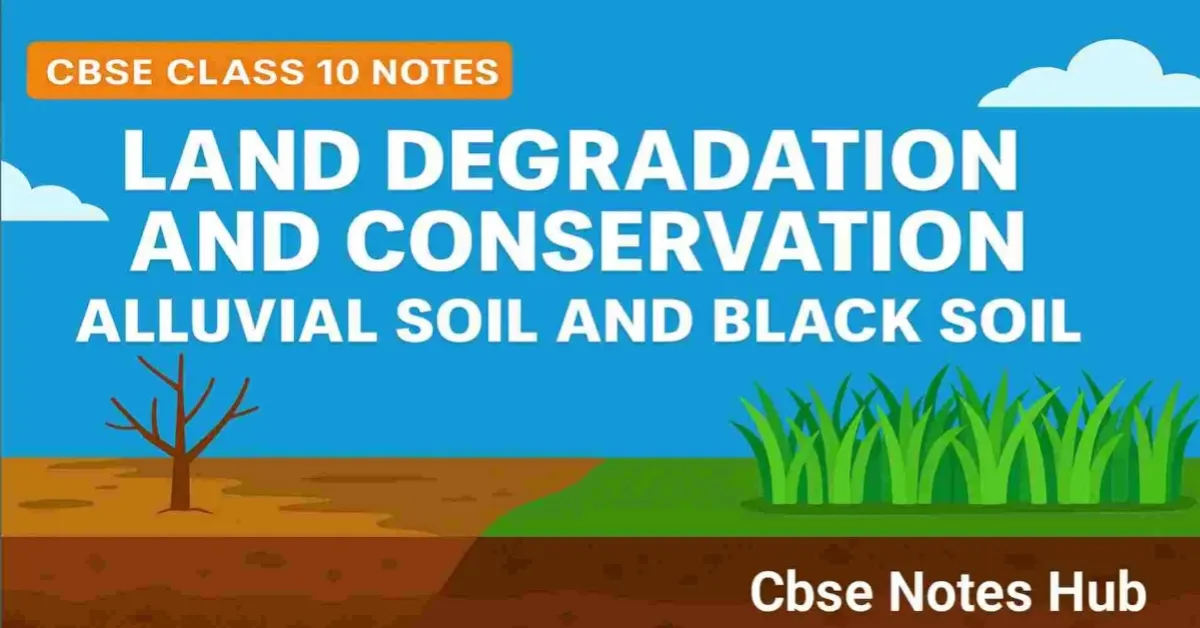This post helps you understand what land degradation is and how this problem can be solved. It also explains soil as a resource and the characteristics of Alluvial and Black soil.
Resources and Development – Class 10 Geography Notes (Part 3)
Land Degradation and Conservation Measures
Land Degradation: Decline in the fertility of land; when land becomes unfit for cultivation.
Causes of Land Degradation (Human Activities)
- Deforestation
- Overgrazing
- Mining and quarrying
- Over-irrigation
- Industrialisation
State–wise Major Causes in India
- Jharkhand, Chhattisgarh, Madhya Pradesh, Odisha: Deforestation due to mining
- Gujarat, Rajasthan, Madhya Pradesh, Maharashtra: Overgrazing
- Punjab, Haryana, Western Uttar Pradesh: Over-irrigation
How to Reduce Land Degradation
- Afforestation
- Proper management of grazing
- Planting shelter belts; stabilising sand dunes with thorny bushes
- Control over mining activities
- Proper management of wastelands
- Safe discharge and disposal of industrial effluents and waste
📘 Must Read:
📌 Land Resources and Land Use Pattern – Class 10 Notes
Soil as a Resource
Soil: Most important renewable resource; provides medium for plant growth and supports diverse life.
Factors of Soil Formation: Relief, parent rock (bedrock), climate, vegetation, time.
Natural Agents: Temperature changes; running water, wind, glaciers; decomposers; chemical and organic changes.
Classification of Soils (India)
Variation in relief, landforms, climate, and vegetation creates different soil types across regions.
Alluvial Soil
- Most widely spread; very fertile; deposited by the Indus, Ganga, Brahmaputra
- Rich in potash, phosphoric acid, and lime; more alkaline in drier areas
- Khadar (new) and Bhangar (old) types
- Ideal for wheat, paddy, sugarcane, cereals and pulses
- Found in Northern Plains; parts of Rajasthan and Gujarat; deltas of Mahanadi, Godavari, Krishna, Kaveri
Black Soil
- Regur / black cotton soil; clayey, high water-retention; forms deep cracks in summer (good aeration)
- Poor in phosphorus; rich in potash, lime, magnesium
- Formed from lava flows; ideal for cotton
- Found in Maharashtra, Saurashtra, Malwa, Madhya Pradesh, Chhattisgarh
Source: NCERT
📘 Also Read:
📌
Resource and Development – Class 10 Notes (Part 1)
📌
Romantic Imagination and National Feeling – Class 10 History Notes (Chapter 1, Part 4)

